11346 A PAIR OF FINE QUALITY BOW FRONTED FIGURED MAHOGANY DWARF OPEN DISPLAY SHELVES OR BOOKCASES IN THE FRENCH DIRECTOIRE TASTE English. Early Nineteenth Century. Measurements: Height to marble: 37 1/2″ (95.3 cm) Width: 42 3/4″ (108.6 cm) Depth: 15 1/2″ (39.4 cm) Height to gallery: 39″ (99 cm)
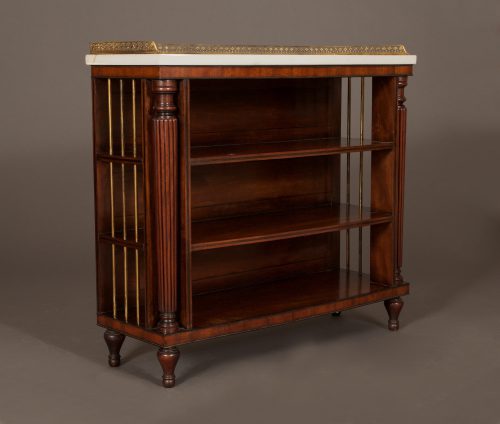
Research
Of mahogany with dark wood inlay. Gilt brass embellishments. Each with slightly bow fronted statuary marble top to which is attached a three quarter gilt-brass foliate gallery. The central section with three finely figured bowfront shelves each with line inlaid edge. The shelves are flanked by a pair of reeded columns within a right angled enclosure. The figured mahogany back with rectangular box line inlay. Each side set with three lacquered brass tubular ‘strings.’ The whole raised on four turned toupie feet.
Provenance:
Kentshire Galleries
A Massachusetts Estate
The present pair of bookcases can be defined stylistically as being in the Directoire taste, exemplifying the influence of French neoclassicism on English design during the Regency period.1 Details such as the toupie feet and semi-enclosed columns to thedom front columns, along with the overall unembellished simplicity and elegant utility of the shelves, were carried over from this period of French decorative arts, which was more sober and marked by a restrained use of materials. The lacquered gilt brass rods enclosing each side of the shelves further contribute to a light and pleasing rectilinear design.
The enthusiasm in England for French 18th century furniture was spurred after the French revolution, when pieces were made available for import. They were collected by the aristocracy and nobility, including the Duke of Wellington and the Prince Regent, who, as king, George IV, was heavily responsible for the popularization of the style.
The designer most credited with establishing this style in Great Britain was the neoclassicist architect Henry Holland. His keynote was always toward the subtle and austere; consequently the style chimed well with his aesthetic. Holland’s notable building and remodeling projects established a style that drew on the restrained richness of the Louis XVI manner, assimilating the latest developments of French taste into the more sober tradition of English design.2
Holland famously worked for the Prince of Wales at Carlton House in the years between 1783 and circa 1795, and it was here that he likely honed his Frenchified decorative taste, due to the Prince’s well-known Francophile leanings. Holland was directly involved with such notable French craftsmen, suppliers and designers as Francis Hervé, L.A. Delabrière, William Gaubert and Dominique Daguerre. It is likely that Holland made a special visit to Paris in 1787 concerning the Carlton House project and “it is from this point that the decidedly French aspects of the project begin to impress so strongly.”3
The the present bookcases bear the unusual feature of a very subtle bow front, softening their otherwise rectilinear form. Combined with their overall restraint and beautifully drawn proportions this suggests the involvement of an architect in their design.
Footnotes:
- C. Musgrave, Regency Furniture, London, Faber and Faber, 1961, p. 100.
- A.E. Richardson et al., Southill: A Regency House, London: Faber and Faber (1951), p.21.
- Francis Collard, Regency Furniture, Antique Collector’s Club (1987 ed.), 33.
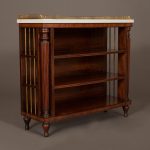
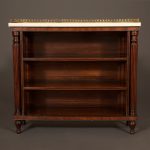
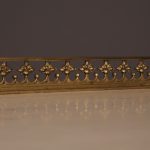
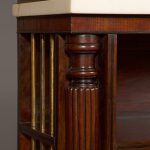
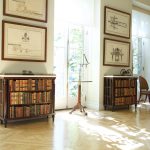
Comments are closed.